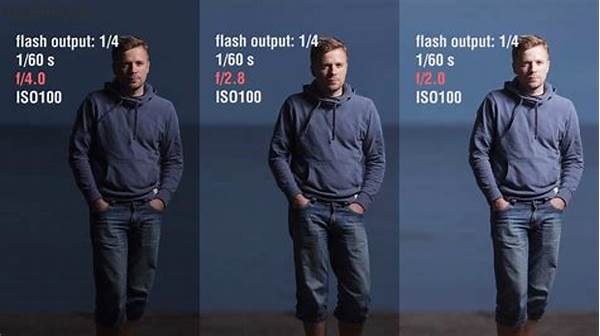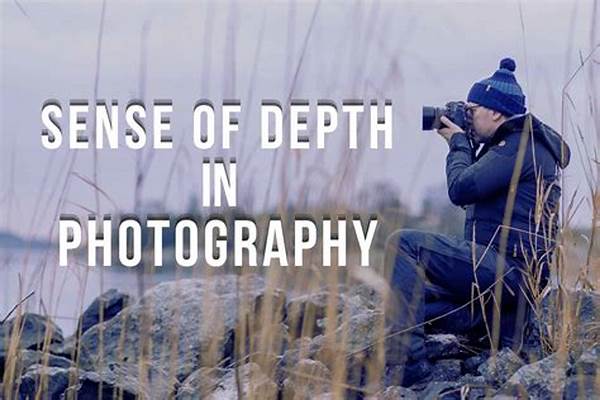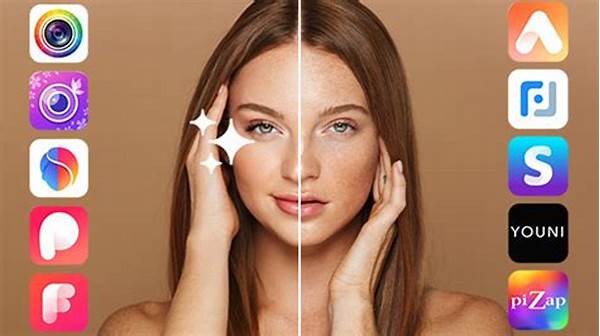Hey there, photography amigos! If you’re into snapping outdoor portraits, you’re probably on a quest to find the perfect ISO settings. After all, nailing that makes all the difference between a bland and a bold shot, right? So, let’s dive into the world of the best ISO settings for outdoor portraits and get your photos looking top-notch.
Read Now : Effective Content Editing Solutions
Understanding ISO in Outdoor Photography
When you’re out taking outdoor portraits, the right ISO setting is crucial to capture the natural light beautifully. The ISO is like your camera’s sensitivity superhero, helping you manage light in various conditions. Typically, the goal is to keep the ISO as low as possible to avoid any graininess. In bright daylight, an ISO setting of 100 to 200 is your best bet. It keeps your images crisp and clean, letting all that stunning natural light do its magic. But what if you’re in a shady spot or it’s overcast? That’s when you might need a little bump up, perhaps to 400, ensuring you still get all the details without overdoing it. Remember, the best ISO settings for outdoor portraits really depend on the light you’re working with. Be adaptable!
Quick Tips on ISO for Outdoor Portraits
1. Morning Magic
Early mornings offer gentle light. The best ISO settings for outdoor portraits here are around 100-200 to keep things bright yet smooth.
2. Golden Hour Goals
During golden hour, scale down to ISO 100 for that soft, dreamy glow in your portraits.
3. Cloudy Day Crew
If clouds are your canopy, try bumping the ISO to 400. It captures all the drama while maintaining clarity.
4. Evening Vibes
As the sun dips, up the ISO to 800. It helps you capture those low-light details perfectly.
Read Now : Unique Pet Portrait Ideas
5. Shaded Spot Savvy
When shooting in shady areas during the day, ISO 400 is your friend for clear, noise-free portraits.
ISO vs. Noise: The Battle Continues
Now, let’s talk about one of the biggest challenges in finding the best ISO settings for outdoor portraits — noise. Noise is the grainy effect you see when you ramp up the ISO too high. While a grainy film look can occasionally be artsy, you generally want smooth portraits. So, what’s the move? Balance! When you increase your ISO, make sure you’re not sacrificing too much noise for light. That might mean adjusting other settings like aperture or shutter speed to maintain a lower ISO. Playing around and seeing how your camera reacts in different lighting will give you a clearer idea of what ISO keeps noise at bay while capturing every perfect detail of your portrait subject.
Crafting Clean and Clear Outdoor Portraits
When capturing outdoor portraits, keep in mind your camera’s limitations. Every extra bit of ISO can creep noise into your shots, especially if your camera isn’t top-of-the-line. Knowing your gear and how it handles higher ISOs will inform how adventurous (or cautious) you should be. For the best ISO settings for outdoor portraits, remember this: normal daylight? Stick to lower ISOs like 100-200. As you lose light, increase ISO mindfully. You want to maintain image integrity without losing your subject in digital grit. Always review your shots, zoom in to check noise, and adjust as needed. Trust your eye, practice, and use every shot as a learning moment. Over time, you’ll get the feel of what truly works best.
Beyond ISO: The Full Picture
ISO is just one aspect of the exposure triangle. Alongside your aperture and shutter speed, it’s essential to achieving the perfect balance for outdoor portraits. While the best ISO settings for outdoor portraits ensure sensitivity control, working harmoniously with the other settings lets you unleash your creativity. For example, combining a low ISO with a wide aperture can beautifully blur backgrounds, creating that sweet bokeh effect so many of us crave in portraits. Similarly, adjusting shutter speed alongside ISO can help freeze motion, ideal for those lifestyle shots capturing movement naturally. So, while ISO is crucial, don’t forget to experiment with these settings together to take your portraits from great to fantastic!
Tech Savvy Portrait Shooting: Let’s Talk Gear
Alright, gear heads, let’s chat. Your camera and lenses play a critical role when finding the best ISO settings for outdoor portraits. Not all cameras handle high ISOs gracefully, right? A full-frame camera offers better noise control compared to crop sensors. If you’re sporting a DSLR or mirrorless, dive into those settings! Invest in quality lenses, too—they make a significant difference. Fast lenses with larger apertures (think f/1.8 or f/2.8) allow more light and might save you from upping the ISO unnecessarily. So, match your equipment to your ISO ambitions and tailor your approach depending on what you’re working with.
Summing Up ISO Mastery
So, we’ve navigated through the nitty-gritty of ISO for outdoor portraits. Remember, the best ISO settings for outdoor portraits largely depend on the lighting conditions and your specific camera gear. By knowing how to adjust and adapt, you’re carving the path to stunning images. Keep your ISO low under a bright day, bump it slightly under the shade, and adapt your full camera settings to collaborate seamlessly. The magic lies in practice and patience—each session will bring new insights. Above all, have fun and let your creative juices flow while capturing memories and moments in their full, crisp glory. Snap away, friends!



